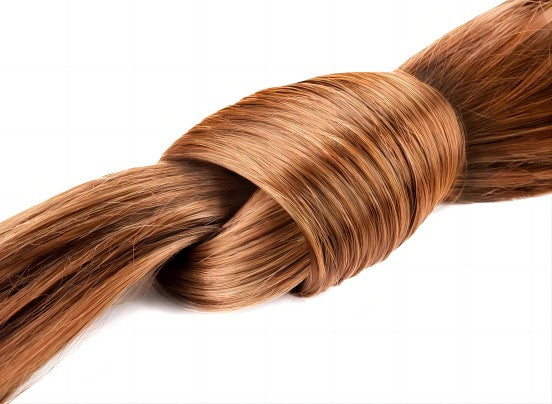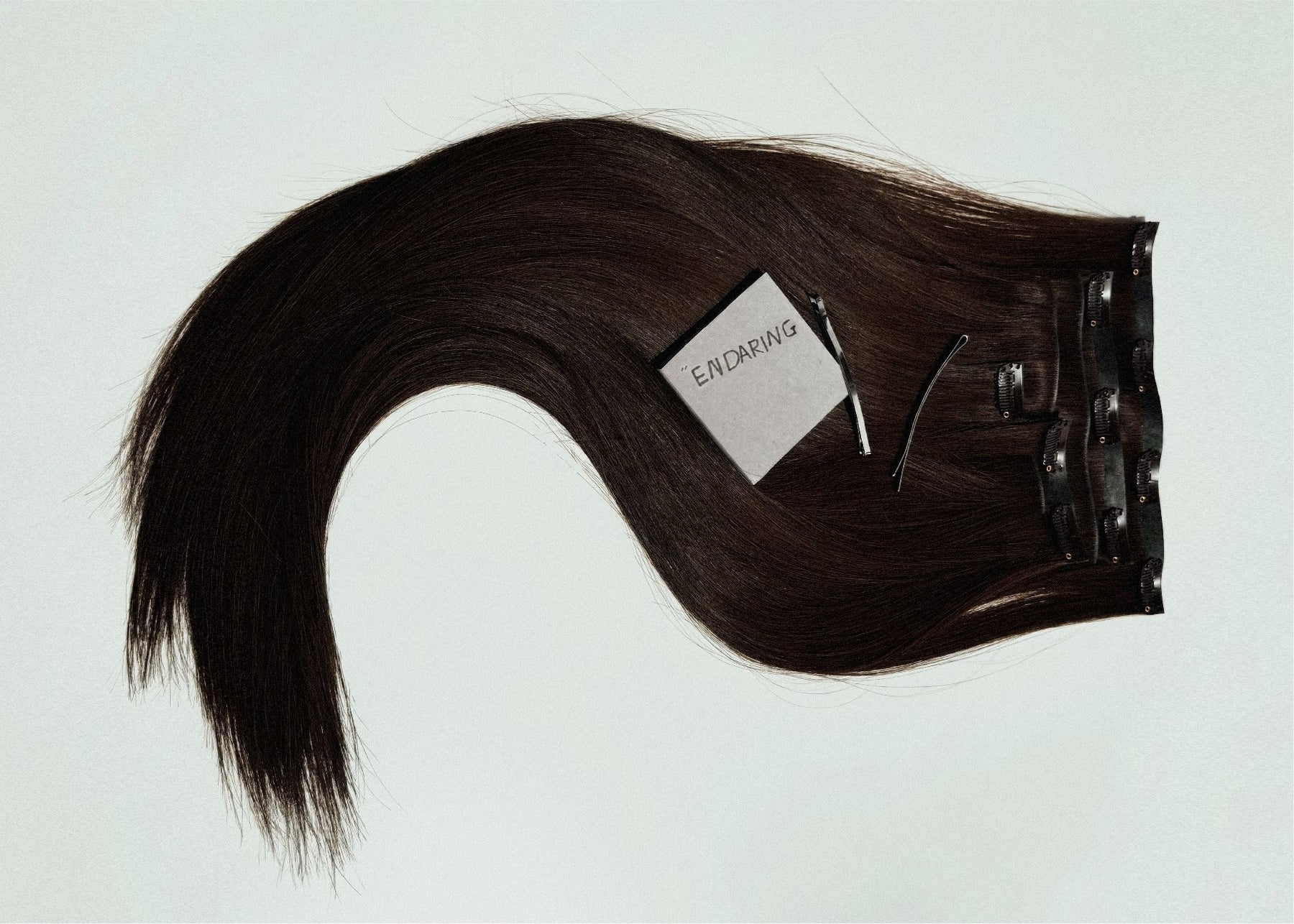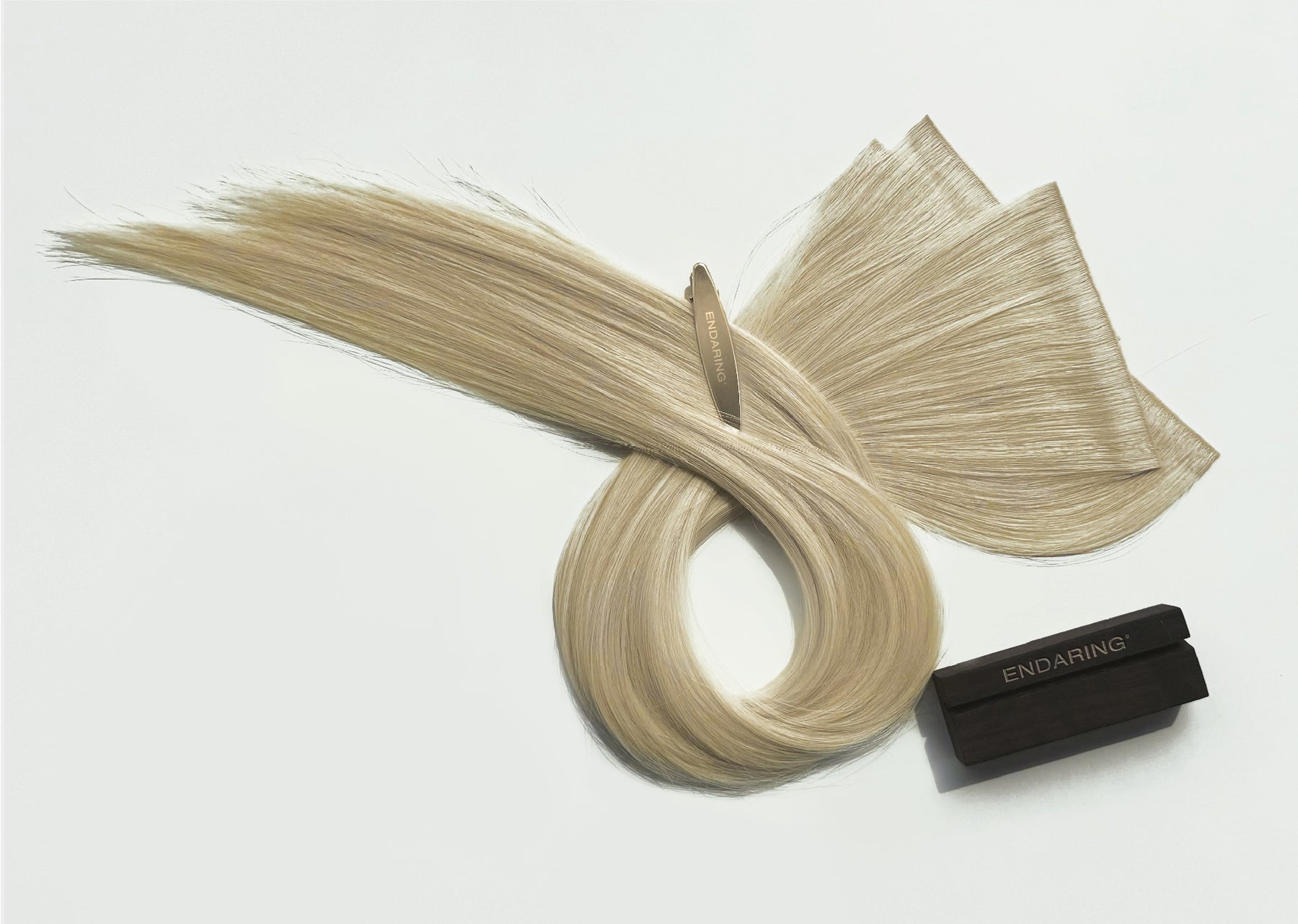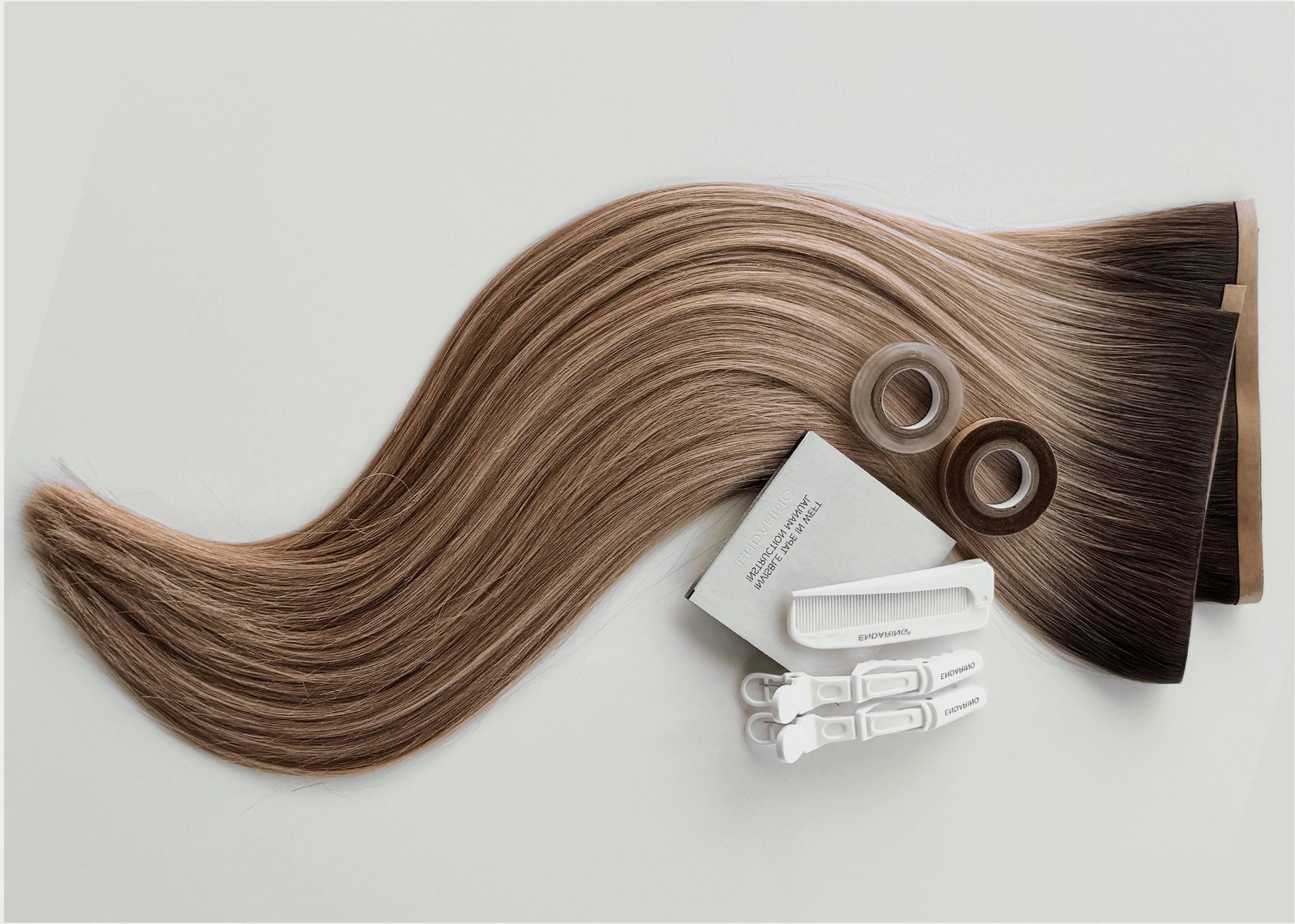Have you ever pondered over the mysteries of your mane, particularly the often-overlooked question: "How much does hair weigh?" It might sound like a trivial matter, but understanding the weight of your locks unveils a world of scientific marvels, practical insights, and even a touch of self-discovery.
1. The Science Behind Hair Weight:
Understanding the weight of hair begins with grasping its scientific composition.
Keratin Composition: Hair is primarily composed of a protein known as keratin. This protein is formed from a unique sequence of amino acids, including cysteine, which contains sulfur atoms. The presence of sulfur atoms plays a crucial role in the strength and structure of the keratin molecules.
Keratin Bonding: Within each hair strand, thousands of keratin molecules are intricately bonded together. These bonds form through a process known as disulfide bonding, where sulfur atoms in the cysteine amino acids connect to create a sturdy, helical structure. This structure is responsible for the hair's resilience.
Structural Contribution: The specific arrangement of these keratin molecules within the hair shaft contributes to the overall strength and flexibility of your hair. This structural organization allows your hair to withstand external stresses, such as brushing, heat styling, and environmental factors.
Hair Weight Accumulation: While a single strand of hair may seem incredibly light, the cumulative effect of thousands or even hundreds of thousands of these keratin-packed strands on your head adds up. Each hair strand, with its tightly bonded keratin molecules, contributes to the overall weight of your hair.
Keratin Density: The density of keratin within your hair strands can also vary. For instance, certain areas of your scalp may have thicker or denser hair follicles, resulting in hair strands with a higher concentration of keratin. This can make specific sections of your hair feel heavier than others.
2. Measuring Hair Weight:
Accurately measuring the weight of hair is essential for understanding its characteristics.
Specialized Hair Scales: Accurate measurement of hair weight requires specialized scales designed explicitly for this purpose. These scales are finely calibrated and can often measure down to the gram or even milligram, ensuring precision in the assessment of hair weight.
Sample Collection: To measure your hair accurately, you'll need to take a small sample. This sample should be representative of your overall hair, so it's essential to choose strands from various parts of your head. This selection helps account for potential variations in hair thickness, texture, and density across your scalp.
Preparing the Sample: Before placing the sample on the scale, ensure it's clean and dry. This eliminates any external factors, such as dirt or moisture, that could affect the measurement. Additionally, the sample should be free of hair care products, as residues can alter the weight.
Placing the Sample on the Scale: Gently lay the prepared hair sample on the specialized scale's measuring surface. These scales are designed to be sensitive and responsive to even the slightest weight, ensuring precise measurements.
Fractional Representation: It's crucial to understand that measuring a small sample of hair provides only a fractional representation of your overall hair weight. Given that there are thousands of individual hair strands on your head, it's practically impossible to weigh each one individually. Therefore, the measured weight reflects the characteristics of the sampled hair but doesn't capture the entire weight of your hair.
The usefulness of Sampling: Despite the limitation of measuring a sample, it serves as a useful tool for assessing specific characteristics of your hair. For instance, you can use this method to determine the average thickness of your hair strands, which can be valuable information for selecting hair care products and styling techniques.
3. Factors Affecting Hair Weight:
Several factors influence the weight of your hair, making it unique to each individual.
Hair Type: Hair type refers to the natural texture and curl pattern of your hair. It can be classified into several categories, including straight, wavy, curly, and kinky. The weight of your hair can vary based on your hair type. For example:
Straight Hair: Straight hair strands are often sleek and smooth, and they tend to be thinner in diameter. As a result, straight hair strands are generally lighter compared to curly or kinky hair.
Wavy Hair: Wavy hair falls between straight and curly in terms of thickness. The weight of wavy hair falls somewhere in the middle, making it slightly heavier than straight hair but lighter than curly or kinky hair.
Curly Hair: Curly hair strands are typically thicker in diameter and have a coiled or spiral shape. This increased thickness means that curly hair is naturally heavier than straight hair.
Kinky Hair: Kinky hair, characterized by tight coils or zigzag patterns, often has the thickest strands and, therefore, the highest natural weight among hair types.
Hair Length: The length of your hair is another key factor in determining its weight. Longer hair naturally weighs more than shorter hair due to the increased length. This is because the hair shaft extends over a greater distance, and each strand's weight adds up.
Hair Density: Hair density refers to the number of hair follicles on your scalp and the proximity of these follicles to one another. It plays a significant role in hair weight. Here's how it works:
High Hair Density: If you have a high hair density, you'll have more hair follicles on your scalp, which means more individual hair strands. This results in a denser and heavier mane.
Low Hair Density: Conversely, individuals with lower hair density have fewer hair follicles and, therefore, fewer hair strands on their scalp. This results in a sparser and lighter head of hair.
4. The Impact of Hair Density:
Your hair's density can significantly affect its weight.
Certainly, let's dive into the specific details regarding the impact of hair density on hair weight:
Hair Density Defined: Hair density is a measure of the number of hair follicles present per square inch (or per square centimeter) on your scalp. It's a quantitative representation of how closely spaced or dispersed your hair follicles are across your scalp.
Measuring Hair Density: To determine your hair density, you can perform a simple count. Select a specific area on your scalp, ideally one square inch, and carefully count the number of hair follicles within that area. This count will give you an idea of your hair density in that particular region.
High Hair Density: If you have a high hair density, it means that there are many hair follicles packed closely together on your scalp. This results in a thick and lush appearance. Importantly, it also means that you have more individual hair strands on your head. As a consequence, individuals with high hair density tend to have a heavier feeling on their heads due to the sheer number of strands contributing to the overall weight.
Low Hair Density: Conversely, low hair density indicates that there are fewer hair follicles in a given area of your scalp. This leads to a sparser appearance and a lower overall number of hair strands. Consequently, those with lower hair density generally experience a lighter feeling on their heads as there are fewer strands to contribute to the total weight.
Variation Across the Scalp: It's important to note that hair density can vary across different areas of your scalp. Some areas may have a higher density, while others may have a lower density. This variation can be influenced by genetics, hormones, and other factors.
Impact on Styling: Hair density not only affects the weight of your hair but also plays a significant role in how you style and manage your hair. Those with high hair density may find it challenging to create sleek, streamlined hairstyles, while those with lower density may have an easier time achieving a more airy and voluminous look.
5. Hair Growth and Weight Changes:
Hair is a dynamic part of your body that continually grows and sheds.
Certainly, let's get into the specifics of how hair growth and shedding impact the weight of your hair:
Hair Growth Rate: On average, hair grows at a rate of about half an inch (1.25 centimeters) per month. However, this rate can vary among individuals due to factors such as genetics, age, and overall health. Some people experience slightly faster or slower hair growth.
Annual Hair Growth: Over a year, this monthly growth rate accumulates to approximately 6 inches (15 centimeters) of hair growth. This means that your hair can grow several inches in a year, adding both length and weight to your mane.
Natural Weight Increase: As your hair grows longer, it naturally becomes heavier due to the added length. This is a gradual process that occurs over time. Longer hair strands contribute more to the overall weight of your hair compared to shorter strands.
Daily Shedding: It's essential to note that, on average, you can lose 50 to 100 individual hair strands daily through a natural shedding process. These lost hairs are replaced by new ones growing from the hair follicles. The shedding of old hair and the growth of new hair are part of the natural hair growth cycle.
Fluctuations in Weight: The combination of ongoing hair growth and daily shedding can lead to fluctuations in your hair's overall weight. For example, when you have longer hair, the added weight from the growth is balanced by the shedding of old hair, which keeps the overall weight relatively stable.
Impacts on Styling: These fluctuations in hair weight can influence how your hair behaves and how you style it. Longer hair may require different styling techniques and products than shorter hair, and it may feel slightly heavier, especially when wet.
Hair Maintenance: Hair maintenance, such as regular trims to remove split ends, can help manage the weight of your hair. Trimming prevents excessive length and minimizes the overall weight, promoting healthier and more manageable hair.
6. Hair Weight Myths and Misconceptions:
There are many myths and misconceptions surrounding hair weight.
Myth: Cutting Makes Hair Lighter: One prevalent myth is the belief that cutting your hair will significantly reduce its weight. This misconception often arises from the perception that shorter hair feels lighter. While it's true that shorter hair may feel different due to its reduced length, it's essential to understand why this doesn't equate to a significant reduction in overall hair weight.
Hair Shaft Weight: The hair shaft, which is the visible part of your hair above the scalp, is surprisingly lightweight. Its composition primarily consists of keratin, a protein that is incredibly light in comparison to other bodily tissues. As such, the actual weight of the hair shaft itself is negligible when compared to the total weight of your entire head of hair.
Weight Distribution: When you cut your hair, you're primarily trimming the hair shaft, which represents only a fraction of the overall hair weight. The majority of the hair's weight resides in the hair follicles beneath the scalp and the hair strands that are still growing. Cutting the hair shaft doesn't impact this underlying weight distribution.
Hair Growth Continues: Hair is continually growing and shedding as part of its natural cycle. When you cut your hair, it doesn't halt this growth process. The hair follicles remain active, producing new strands to replace the ones that have been cut. This ongoing cycle ensures that the weight of your hair remains relatively stable over time.
Perception vs. Reality: The feeling of lightness that often accompanies a haircut is more about the change in texture and the reduction of length, which can make your hair feel less cumbersome and more manageable. It's a sensory perception rather than a significant alteration in weight.
Hair Health Benefits: While cutting your hair won't make it lighter, regular trims can have other benefits for your hair. Removing split ends and damaged sections can improve overall hair health, making it look and feel better. Healthy hair is often more manageable and can contribute to a positive hair experience.
7. Fun Hair Weight Facts:
To wrap things up, let's delve into some interesting hair weight facts.
Hair's Water Absorption: Hair is remarkably absorbent, capable of soaking up a substantial amount of water when it gets wet. This ability is primarily due to the porous nature of the hair shaft, which allows it to absorb liquids. When your hair comes into contact with water, such as during a shower or swim, it can take in up to 30% of its weight in water. This absorption temporarily increases the hair's overall weight, making it feel heavier than when it's dry. As a result, you might notice a slight sensation of weight or bulkiness after getting your hair wet.
Temporary Weight Increase: It's important to note that the increase in hair weight due to water absorption is a temporary phenomenon. As your hair dries, it gradually releases the absorbed moisture, returning to its original weight. This dynamic property of hair allows it to adapt to different environmental conditions and moisture levels. So, while your hair may feel heavier when wet, this effect is transitory, and your hair will revert to its usual weight once it dries.
Comparison to Body Weight: Despite the sensation of weight in your hair, its actual weight is incredibly light when compared to the overall weight of your entire body. The average human head of hair, which can weigh anywhere from 100 to 150 grams, represents only a fraction of the total body weight. In contrast, the average weight of an adult human body is approximately 62 kilograms (or 136 pounds). This striking difference highlights the impressive strength and endurance of the neck and scalp muscles, which support the weight of your head and hair throughout your daily activities.
These intriguing hair weight facts underscore the remarkable properties of hair, including its water-absorbing capacity and its relatively modest weight when compared to the body. They offer a captivating glimpse into the unique characteristics of this dynamic feature of our appearance.





